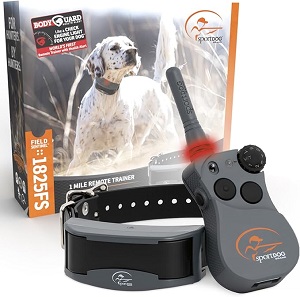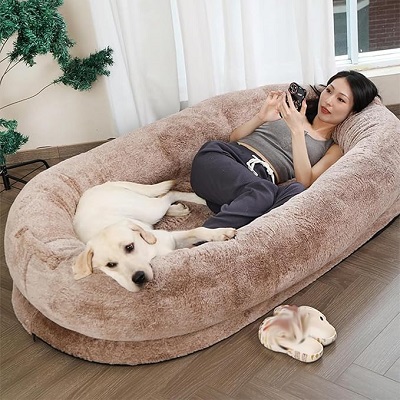
Training Tips for Your Hyperactive Dog
Training Tips for Your Hyperactive Dog: Effective Strategies for Calmness
Training Tips for Your Hyperactive Dog
Hyperactivity in dogs can be a challenge for many pet owners. An energetic dog can be a joy to have, but when that energy is misdirected, it can lead to behavior problems that can affect both your dog’s well-being and your peace of mind. Fortunately, with the right training techniques and a consistent approach, you can help your hyperactive dog channel their energy positively. In this article, we’ll explore effective training tips to help manage hyperactivity in your dog.
1. Understanding Hyperactivity in Dogs
Before implementing training strategies, it’s essential to understand what hyperactivity means in dogs:
- Definition: Hyperactive dogs often display excessive energy levels, restlessness, and difficulty calming down. They may engage in behaviors like jumping, barking, or racing around the house.
- Causes: Factors contributing to hyperactivity can include genetics, lack of physical exercise, insufficient mental stimulation, anxiety, and certain medical conditions.
Understanding the underlying causes of your dog's hyperactivity is crucial for developing an effective training plan.
Essentials for Your Newly Adopted Pet
Welcoming a shelter pet into your life is a beautiful journey. Here are some handpicked items to help your new friend feel safe, loved, and right at home:
2. Assessing Your Dog’s Needs
Every dog is unique, and what works for one may not work for another. Here are steps to assess your dog’s specific needs:
2.1. Evaluate Energy Levels
Take note of how your dog behaves throughout the day. Understanding their natural energy levels will help you tailor your training and exercise plans.
- Activity Levels: Consider how much time your dog spends being active versus resting. Hyperactive dogs often require more stimulation and exercise.
- Breeds and Energy: Certain breeds are naturally more energetic than others. Research your dog’s breed characteristics to understand their energy requirements better.
2.2. Identify Triggers
Observe your dog’s behavior in various situations to identify triggers for hyperactivity:
- Environmental Factors: Note if certain sounds, sights, or people excite your dog.
- Stress and Anxiety: Some hyperactive behaviors may stem from anxiety or stress. Pay attention to situations that cause your dog to become overly stimulated.
3. Implementing Training Techniques
Once you have assessed your dog’s needs, you can implement effective training techniques to help manage hyperactivity:
3.1. Establish a Routine
Creating a structured daily routine can provide stability for your dog, helping them know what to expect:
- Consistent Schedule: Set regular times for feeding, exercise, playtime, and training sessions. Consistency helps your dog feel secure and reduces anxiety.
- Incorporate Exercise: Ensure that your routine includes ample physical activity. Regular walks, play sessions, and mental stimulation will help burn off excess energy.
3.2. Use Positive Reinforcement
Positive reinforcement is one of the most effective training techniques for managing hyperactivity:
- Reward Calm Behavior: Use treats, praise, or playtime to reward your dog for calm behavior, especially during training sessions. This encourages them to associate being calm with positive outcomes.
- Ignore Hyperactive Behavior: When your dog exhibits hyperactive behavior, avoid giving attention until they settle down. This teaches them that calm behavior is what earns your attention.
3.3. Engage in Interactive Play
Interactive play is a fantastic way to channel your dog’s energy constructively:
- Tug-of-War: This game allows your dog to engage their muscles while reinforcing commands like "drop it."
- Fetch: Playing fetch provides excellent exercise and can help your dog learn to return to you.
- Puzzle Toys: Use treat-dispensing toys that require your dog to think and work for their rewards. This mental stimulation can help tire them out.
4. Incorporating Exercise and Mental Stimulation
Physical exercise and mental stimulation are essential for managing hyperactivity in dogs. Here’s how to incorporate them into your routine:
4.1. Regular Exercise
Ensure your dog receives daily exercise appropriate for their age, breed, and energy level:
- Walks: Aim for at least 30 minutes to 2 hours of walking each day, depending on your dog’s needs.
- Off-Leash Time: If possible, provide opportunities for off-leash play in a safe area where your dog can run freely.
- Agility Training: Consider agility training classes to engage your dog physically and mentally while improving their focus and obedience.
4.2. Mental Stimulation Activities
Mental stimulation can help tire out a hyperactive dog just as much as physical exercise:
- Training Sessions: Incorporate short training sessions throughout the day to teach new commands or tricks. This engages your dog’s mind and improves focus.
- Hide and Seek: Play hide and seek by hiding treats around the house for your dog to find. This activity taps into their natural hunting instincts.
- Interactive Games: Invest in interactive dog games that challenge your dog mentally. This can include puzzle toys or games that require problem-solving skills.
5. Addressing Behavioral Issues
Hyperactivity can sometimes lead to behavioral problems. Here are some strategies to address common issues:
5.1. Jumping Up
If your dog jumps on people, it’s essential to train them to greet visitors politely:
- Ignore Jumping: When your dog jumps up, turn away and ignore them. Only give attention when they have all four paws on the ground.
- Reward Good Behavior: When your dog remains calm during greetings, reward them with treats and praise.
5.2. Excessive Barking
Excessive barking can be a result of hyperactivity or excitement:
- Identify Triggers: Determine what causes your dog to bark excessively (e.g., doorbells, other dogs) and work to desensitize them to those triggers gradually.
- Teach “Quiet” Command: Use positive reinforcement to teach your dog a “quiet” command. Reward them for being quiet after you give the command.
6. Seeking Professional Help
If your dog’s hyperactivity persists despite your efforts, it may be time to seek professional help:
- Consult a Trainer: A certified dog trainer can assess your dog’s behavior and provide tailored training plans and techniques.
- Consider Veterinary Advice: If you suspect underlying health issues contributing to your dog’s hyperactivity, consult your veterinarian for a thorough evaluation.
7. Conclusion
Training a hyperactive dog requires patience, consistency, and a willingness to adapt your training methods to suit your dog’s individual needs. By establishing a routine, incorporating exercise and mental stimulation, and using positive reinforcement, you can help your dog learn to manage their energy in a positive and constructive manner.
Remember, every dog is different, and what works for one may not work for another. Be observant and adjust your training techniques as necessary to create the best environment for your hyperactive companion. With time and dedication, you can enjoy a calm and fulfilling relationship with your energetic dog.
Affiliate Products
We may earn a small commission when you shop through our links — it helps us keep sharing love and care for every dog out there, at no extra cost to you.
Up to 75% Discount

Dog Collar with Health Monitoring
BUY NOW »
Up to 55% Discount

Luxury Faux Furhuge Napping Bed
BUY NOW »

